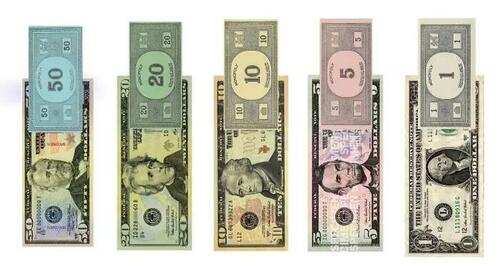From High Inflation To Hyperinflation: How Close Are We?
Authored by Nick Giambruno via InternationalMan.com,
The Federal Reserve is now entering a monetary easing and rate cutting cycle in an environment of elevated inflation.
The last time this happened was during the 1970s, a decade that saw inflation spiral out of control.
The 1970s: An Optimistic Scenario
In the early 1970s, under Chairman Arthur Burns, the Fed faced rising inflation and concerns about economic growth and unemployment.
Despite elevated inflation, the Fed cut interest rates multiple times until 1972 to stimulate economic growth.
Inflation soared to over 12% in the months that followed.
In response to the rising inflation, the Fed raised rates aggressively in 1974, pushing the federal funds rate from around 5.75% to 13%.
However, as the economy entered a deeper recession, the Fed began cutting rates again in 1975 despite inflation remaining elevated at around 9%.
By the end of the decade, inflation had reached double digits again at over 11% in 1979 and peaked at 13.5% in 1980.
The raging inflation of the 1970s and early 1980s is a stark illustration of the danger of cutting interest rates in an environment of elevated inflation… such as the one we are in today.
However, as bad as the 1970s inflation was, I believe it’s an optimistic scenario.
That’s because the out-of-control inflation then was only tamed when Paul Volcker hiked rates above 17%… an option that is not available to the Fed today because of the skyrocketing federal interest expense.
In fact, the Fed could only raise rates to about 5.25%—less than a third of what Volcker had to do—before capitulating recently.
In other words, the higher the debt load, the less room the Fed has to raise rates because of the interest expense.
As the debt pile and accompanying interest expense grow exponentially, I am skeptical of their ability to hike rates to even 5.25% again; forget about higher than that.
Imagine what could have happened in the 1970s and early 1980s if Volcker could have raised rates to only 5.25% instead of over 17%.
This is the environment the US now finds itself in.
Rate Cuts Amid Elevated Inflation: Other Examples
If the 1970s in the US is the optimistic scenario, Brazil and Argentina in the 1980s offer other possibilities.
Both countries were cutting interest rates amid elevated inflation at the time, resulting in eventual hyperinflation.
The same thing happened in Zimbabwe in the 2000s when the central bank cut interest rates amid elevated inflation, culminating in hyperinflation.
In the 2010s, the Venezuelan government kept interest rates artificially low despite skyrocketing inflation. The result was hyperinflation.
These examples highlight the dangers of cutting interest rates or maintaining low rates in an environment of elevated inflation.
In each case, the central banks’ actions, often influenced by political pressures, exacerbated inflation and led to severe economic crises.
While those examples are insightful, the US is not in the same class as Argentina, Brazil, or Zimbabwe.
It’s the most powerful country in the history of the world, leader of the current world order, and issuer of the world’s premier reserve currency.
So, it will take a lot more to push the US into hyperinflation.
I’m not saying that hyperinflation in the US is inevitable or imminent, though it remains a growing possibility. That is especially true as World War 3 plays out and a multipolar world order potentially emerges that could change everything.
In the meantime, I believe ever-increasing currency debasement potentially worse than what the US experienced in the 1970s—though not necessarily imminent hyperinflation—is an unstoppable trend you can bet on.
That’s why I think the gold price is set to skyrocket.
The last time the US experienced runaway inflation was in the 1970s.
Then, gold exploded from $35 per ounce to $850 in 1980—a gain of over 2,300% or more than 24x.
I expect the percentage rise in the price of gold to be at least as significant as it was during the 1970s.
While this megatrend is already well underway, I believe the most significant gains are still ahead.
Holding physical gold bullion in a private non-bank vault in a wealth-friendly jurisdiction like Singapore, Switzerland, or the Cayman Islands is a good idea.
That’s why I just released an urgent new PDF report with all the details.
Tyler Durden
Wed, 10/23/2024 – 05:00

